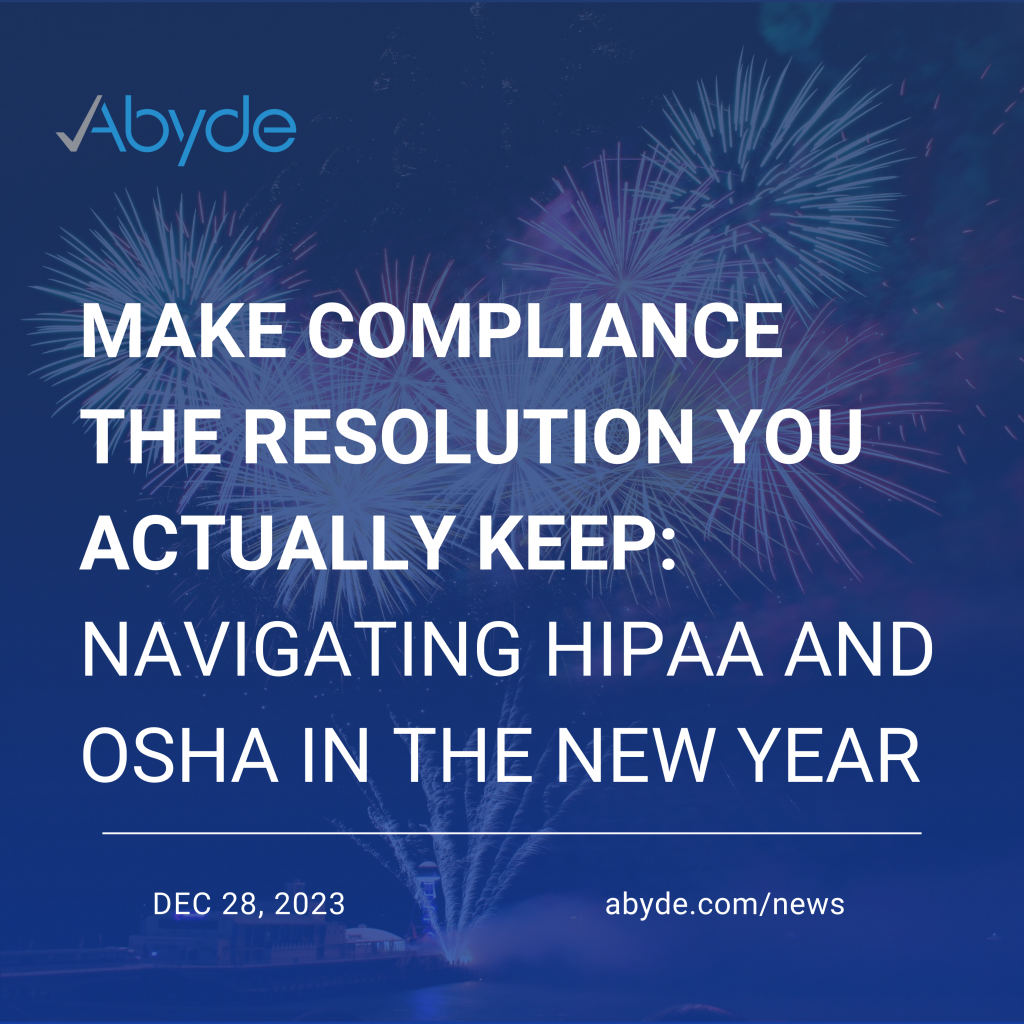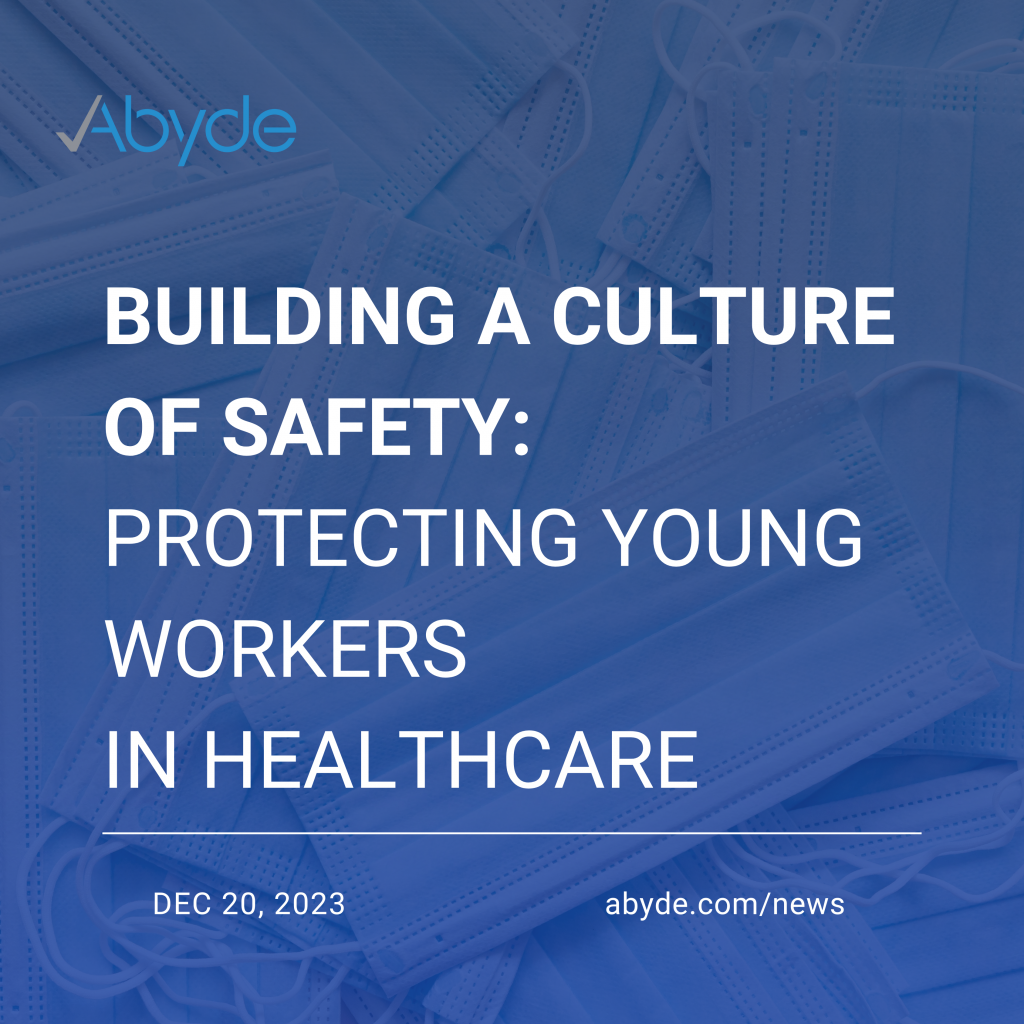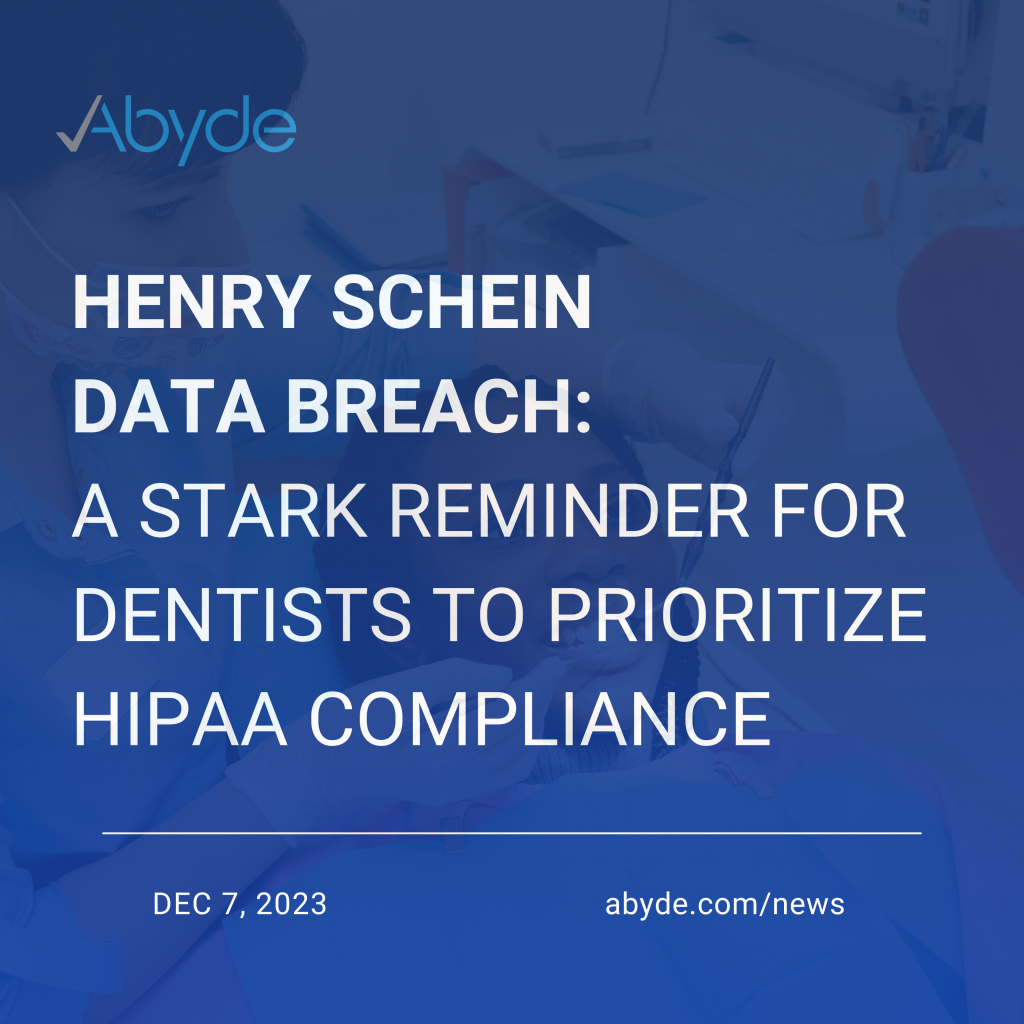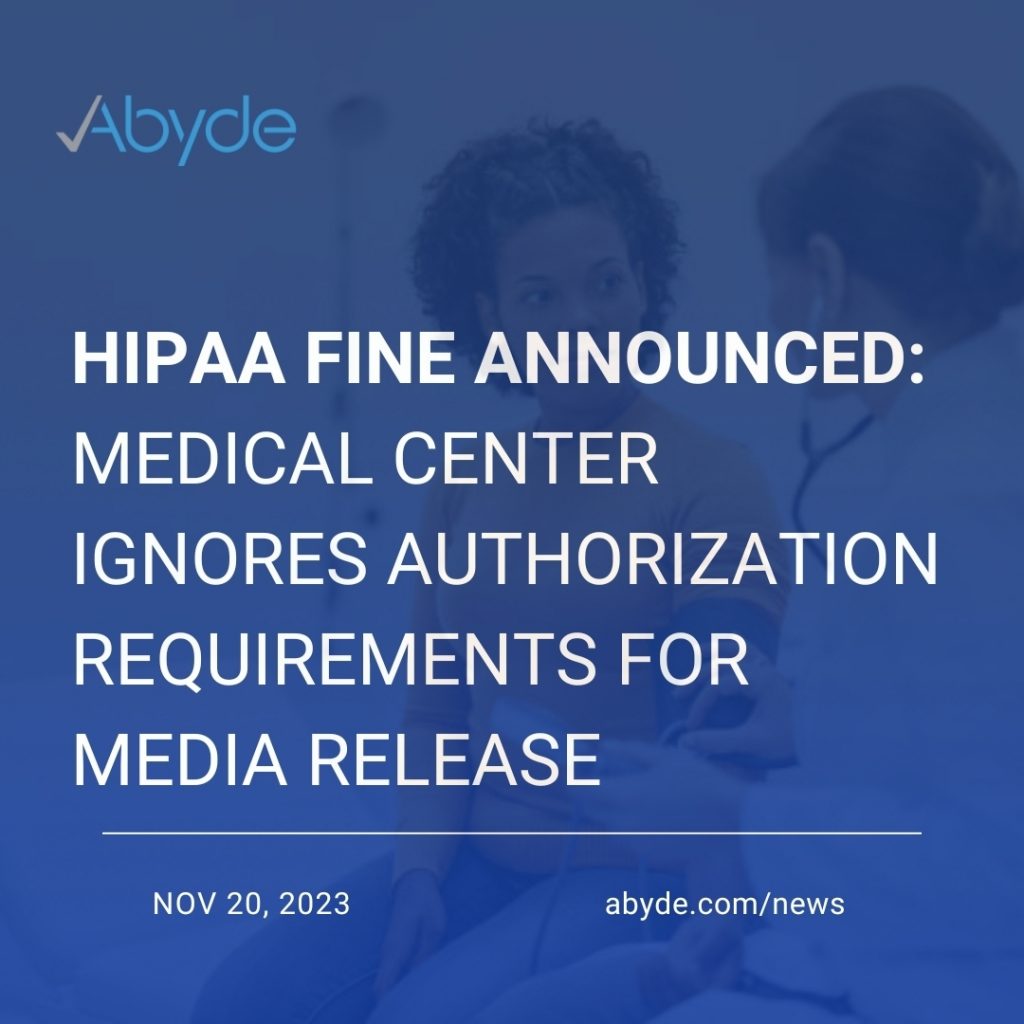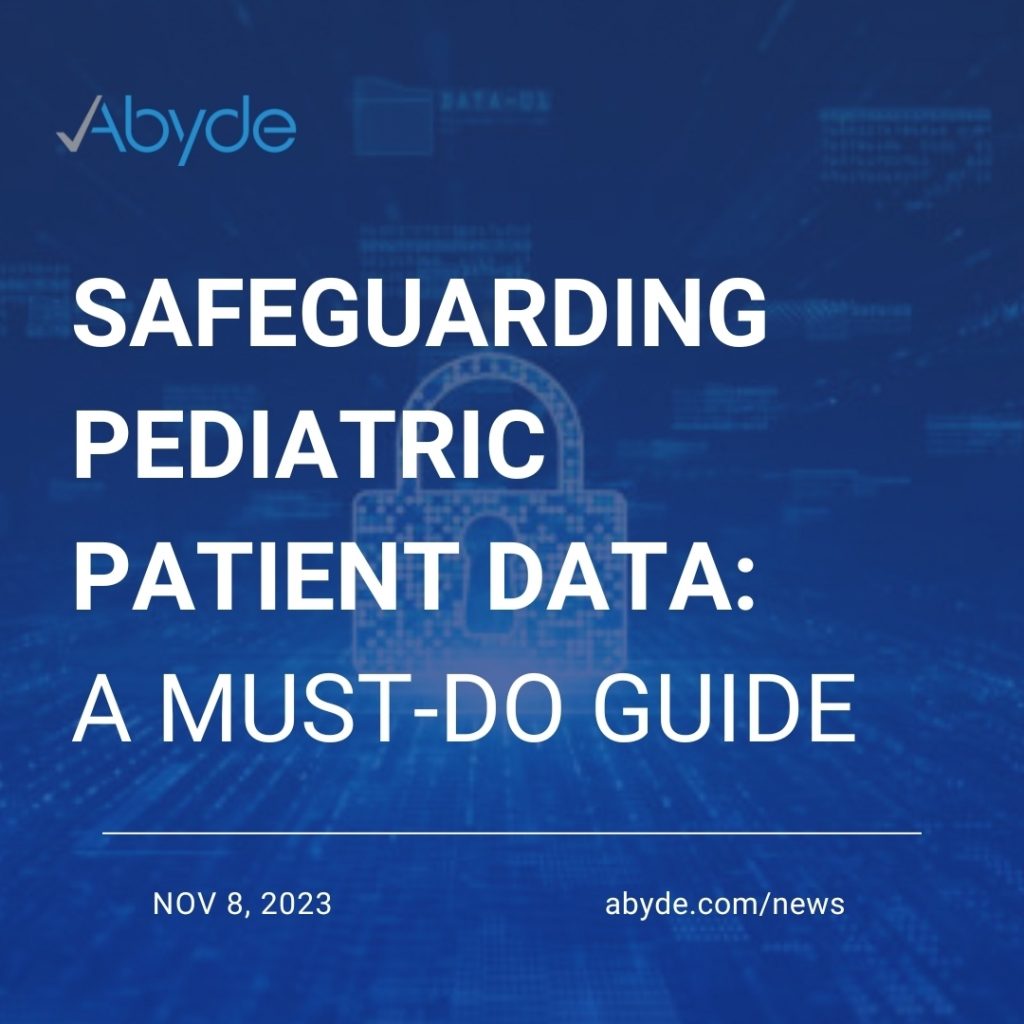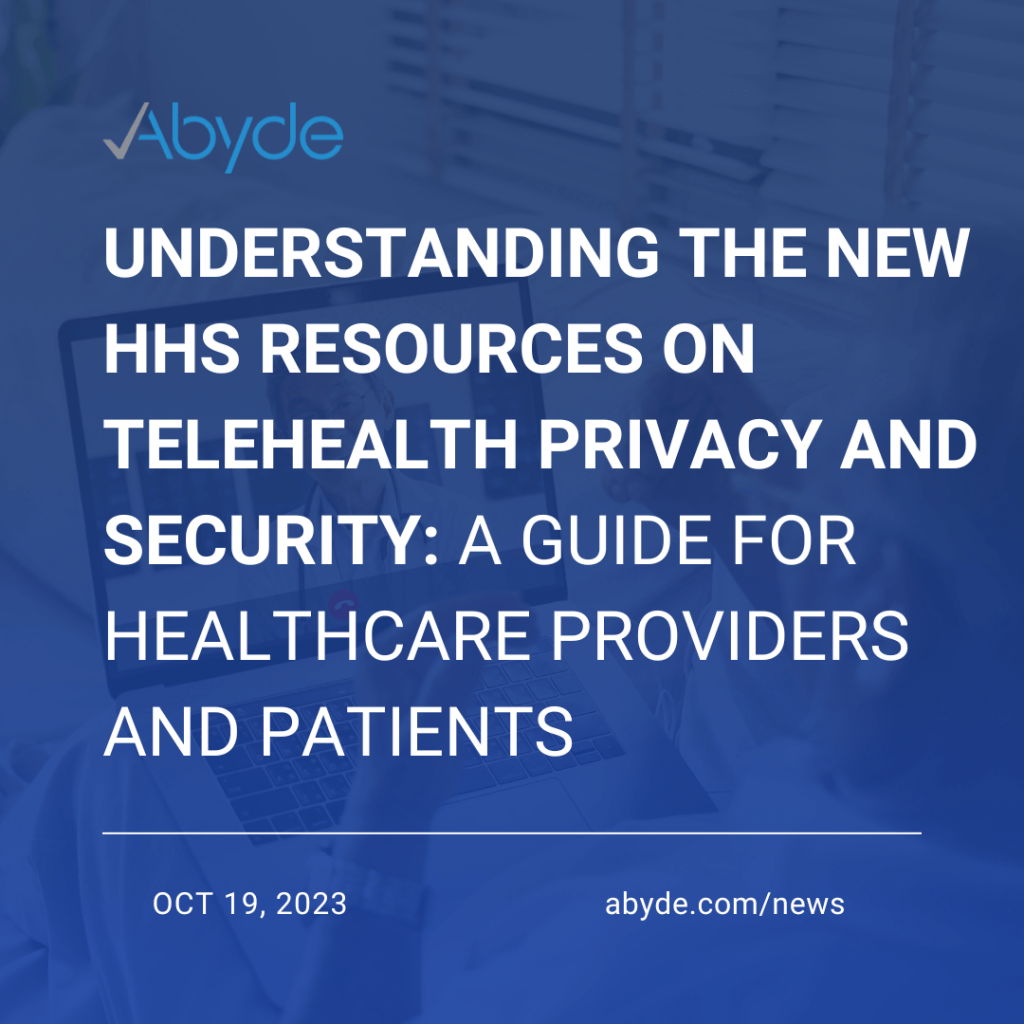January 3, 2024 At Abyde, we’re always tuned into the importance of keeping health info safe and sound. So, when we heard about what happened at NewYork-Presbyterian Hospital (NYP), you can bet we were listening. The big news? New York’s Attorney General Letitia James announced a whopping $300,000 settlement with NYP. This was a major letdown in the world of HIPAA compliance, revealing some serious gaps in how they were handling patient privacy and protected health information (PHI). Here’s the lowdown: Patients using NYP’s website to look for healthcare services got more than they bargained for. Unbeknownst to them, advertising tools were tracking their online moves, and sending information to third parties. Talk about a breach of trust, especially when we’re dealing with sensitive health info! This whole fiasco reminds us just how crucial HIPAA compliance is. It wasn’t just some tech glitch at NYP; it was a broken promise to keep patient data secure. This shows that following HIPAA rules isn’t just ticking a box; it’s a super important, continuous part of healthcare operations, needing tight controls and constant vigilance. The fallout from this kind of breach? Huge. We’re talking about identity theft, discrimination, and other nasty stuff that could hurt patients. It’s a stark reminder to healthcare folks that patient data isn’t just some digital file; it’s a deeply personal and private matter that deserves the utmost respect and protection. So, what’s the takeaway from NYP’s settlement? It’s just the start of a much bigger journey towards really valuing patient privacy rights. This incident should be a loud wake-up call for the healthcare industry to take a hard look at how they manage patient data, ensuring they stick to data protection laws and honor the dignity and privacy of the information patients trust. At Abyde, we’re all about compliance and keeping sensitive info safe. We see this moment as a chance for some serious thinking and action to make healthcare more secure and respectful of privacy. Let’s use the NYP breach as a lesson in what can happen if patients’ data isn’t secured properly. For more information about Abyde, email info@abyde.com and click here to schedule a demo of our revolutionary software solution.
Make Compliance the Resolution You Actually Keep: Navigating HIPAA and OSHA in the New Year
December 28, 2023 As the New Year unfolds, healthcare organizations face the ongoing challenge of maintaining compliance with HIPAA and OSHA regulations. Abyde, your partner in compliance, offers an expanded toolkit of tips and strategies to not only meet but exceed these requirements. Enhanced Training Programs: Keep your staff updated with the latest in HIPAA and OSHA regulations. Regular training ensures everyone is on the same page and reduces the risk of unintentional non-compliance. Tailor training to different roles within your organization for targeted learning. Advanced Risk Assessments: Utilize assessments that go beyond surface-level checks. Incorporate regular audits to continually evaluate and improve your compliance. Abyde’s software includes a comprehensive risk analysis, which allows you to continuously check your adherence to compliance. In-depth Regulatory Updates: Stay ahead of the curve by not just staying informed, but also analyzing how new regulations impact your specific practice. Consider workshops and detailed briefings for in-depth understanding. Building a Robust Compliance Culture: Create an environment where compliance is more than a requirement – it’s a value. Engage staff at all levels in discussions about the importance of compliance and how it protects everyone involved. Expert Consultation and Support: Utilize Abyde’s expert advisory services for complex compliance issues. Tailored guidance can help navigate unique challenges your practice may face. Patient and Staff Engagement: Educate your patients and staff about their rights and responsibilities under HIPAA and OSHA. This not only aids in compliance but also builds trust and transparency in your healthcare services. Regular Policy Reviews and Updates: Keep your policies and procedures up-to-date with evolving regulations. A proactive approach to policy management can prevent potential compliance gaps. Emergency Preparedness and Response Planning: Include compliance considerations in your emergency preparedness plans. Ensure that even in a crisis, your practice adheres to HIPAA and OSHA standards. Celebrating Compliance Milestones: Acknowledge and celebrate your team’s efforts in maintaining compliance. This boosts morale and reinforces the importance of these efforts. As we prepare for 2024, let’s prioritize compliance not just as a legal necessity but as a fundamental component of quality healthcare delivery. Abyde stands with you in this journey, offering comprehensive tools and resources to ensure that your New Year’s resolution of compliance is one you actually keep. For more insights and support in achieving and maintaining HIPAA and OSHA compliance from Abyde, email us at info@abyde.com, or schedule a consultation with one of our compliance experts here!
Building a Culture of Safety: Protecting Young Workers in Healthcare
December 20, 2023 Protecting patients and our young workforce is a shared responsibility. At Abyde, we’re committed to safety, both for patients and for the dedicated individuals who keep our healthcare systems running. That’s why the recent tragedy at Florence Hardwoods sawmill in Wisconsin hit us hard. A 16-year-old worker, tragically, lost his life due to operating dangerous machinery without proper training. This heartbreaking incident underscores a crucial point: age restrictions matter when it comes to workplace safety, especially when dangerous equipment is involved. The U.S. Department of Labor’s investigation revealed Florence Hardwoods failed to train both teenage and adult workers in safety procedures, exposing them to avoidable hazards. This blatant disregard for regulations and basic human safety is unacceptable. As Abyde, we stand firmly against the use of underage workers for tasks that put them or others at risk. Why is this so important? What can we do? The tragedy at Florence Hardwoods serves as a stark reminder that workplace safety isn’t just about following regulations; it’s about protecting lives. At Abyde, we urge all healthcare institutions, to re-evaluate their safety protocols and ensure that age-appropriate restrictions are in place to protect young workers from harm. It’s time to say “no more” to child’s play with dangerous medical equipment. Let’s create a safer future for everyone in the healthcare workplace. Together, we can prevent future tragedies and ensure that every healthcare worker, regardless of age, returns home safe and sound every day. Additional Resources
Abyde Insights: Managing the Aftermath of the Delta Dental MOVEit Breach
December 18, 2023 In the ever-evolving landscape of cybersecurity, vigilance is key. Recently, Delta Dental of California faced the brunt of a cyberattack, highlighting the imperative need for robust security measures. At Abyde, we believe in keeping our community informed to fortify defenses against potential threats. Here’s a closer look at the Delta Dental MOVEit breach and insights on strengthening your cybersecurity posture. Understanding the Breach Delta Dental of California, an esteemed provider of dental insurance to 45 million individuals, fell victim to the Clop hacking group’s exploitation of a zero-day vulnerability in Progress Software’s MOVEit Transfer solution. This breach, affecting a staggering 6,928,932 dental plan members, underscores the critical importance of cybersecurity in safeguarding sensitive information. Timeline of Events The breach unfolded when Delta Dental identified an SQL injection vulnerability (CVE-2023-34362) in MOVEit Transfer on June 1, 2023. Despite Progress Software swiftly releasing an emergency patch on May 31, 2023, the Clop group had exploited the flaw between May 27 and May 30, 2023. The aftermath saw unauthorized access and data exfiltration from Delta Dental’s MOVEit server. Response and Analysis Delta Dental responded promptly, engaging third-party computer forensics experts to conduct a thorough analysis. The complexity of the breach required meticulous scrutiny, leading to the finalization of the affected individuals and data types on November 27, 2023. Notification letters commenced distribution on December 14, 2023. Protective Measures for Affected Individuals In an effort to mitigate the impact on affected individuals, Delta Dental has taken proactive steps. Those affected are being offered 24 months of complimentary credit monitoring and identity theft protection services. This measure aims to empower individuals to monitor and protect their personal information during this challenging time. Learning from the Incident While Delta Dental emphasized that this was a mass exploitation incident affecting numerous companies, the magnitude of the breach sets it apart. With nearly 7 million individuals affected, it stands as the third-largest healthcare MOVEit-related breach reported. HIPAA Compliance and Notification Delta Dental adhered to the HIPAA Breach Notification Rule, reporting the breach to the HHS’ Office for Civil Rights on September 6, 2023, within the stipulated 60-day timeframe. The intricate process of identifying affected individuals and data involves digital forensic and incident response providers, highlighting the complexities of incident response. At Abyde, we advocate for a proactive approach to cybersecurity and compliance. Regularly updating and patching software, conducting comprehensive risk assessments, and fostering a culture of compliance are crucial components of a resilient HIPAA compliance strategy. Abyde is here to guide you on your journey to enhanced security and privacy. Reach out to one of our experts today to learn more! Call 800.594.0883 or email info@abyde.com.
Dissecting the Henry Schein Data Breach: A Stark Reminder for Dentists to Prioritize HIPAA
December 11, 2023 In October 2023, Henry Schein, a major dental supply distributor, suffered a significant data breach. The ransomware attack compromised sensitive information belonging to both patients and dental practices, including names, addresses, Social Security numbers, and financial information. This incident serves as a stark reminder for dentists of the importance of taking data security and compliance seriously. Key Takeaways from the Henry Schein Data Breach: Mitchell Rubinstein DMD, a practicing dentist and noted cybersecurity educator in New York City is hoping this is the wakeup call that dental professionals need to start taking cybersecurity and HIPAA seriously. “An important thing to learn from the Henry Schein breach is that everyone is vulnerable. They’re a multibillion dollar healthcare corporation with far greater resources than any dental practice. If they can fall victim to a cyberattack, then so can any of us.” He went on to add, “Having a plan in place to respond to a cyberattack is just as important as having a plan to prevent one.” What dentists can do to protect their practices: “The companies we do business with accumulate a great deal of information about us,” Dr. Rubinstein stated. “If that information is compromised in a cyberattack, it can result in several layers of harm, not only to us, but to our patients as well.” Abyde: Your Partner in Cybersecurity and Compliance Abyde understands the importance of data security and compliance for dental practices. We offer a comprehensive solution designed to help protect you from data breaches and audits while also helping you ensure HIPAA compliance. Our solution includes: By taking data security and compliance seriously, dentists can help prevent data breaches, protect their patients, and avoid legal ramifications. Let’s work together to create a safer environment for everyone involved in dental care. Contact Abyde today to learn more about our HIPAA-compliant solutions and how we can help you protect your practice. Call Abyde! 800.594.0883 or Email Us info@abyde.com Additional Resources:The Department of Health and Human Services (HHS) website on HIPAA
OSHA Fine Alert: Workplace Violence in Healthcare is A Serious Threat
December 1, 2023 The recent OSHA investigation of a South Bay correctional facility highlights the ongoing problem of workplace violence in healthcare settings. The facility failed to implement proper safety protocols, resulting in a violent attack on a nurse by an inmate. This incident underscores the critical need for healthcare employers to prioritize worker safety and comply with OSHA regulations. Key Takeaways from the South Bay Incident: Abyde: Your Partner in Healthcare Compliance Abyde understands the unique challenges of healthcare organizations in ensuring worker safety and compliance. We offer a comprehensive suite of solutions to help: Protect Your Workers and Avoid Legal Ramifications Failing to prioritize workplace safety can have serious consequences for healthcare organizations, including legal action, fines, and reputational damage. By partnering with Abyde, you can proactively comply with regulations and create a safer environment for your staff. Click here to learn more about Abyde’s solutions for healthcare compliance and worker safety. Additional Resources:
The Top Three Steps to Remain OSHA and HIPAA Compliant when Hiring New Employees
November 30, 2023 In the fast-paced realm of healthcare, where patient confidentiality and workplace safety are paramount, hiring new staff demands meticulous attention to HIPAA and OSHA compliance. From the moment a new employee steps through the door, it’s crucial to instill a culture of compliance. Here’s a breakdown of the top three steps a medical practice should take during the onboarding process to ensure their team members are well-versed in compliance. 1. Training: The Foundation of Compliance Training is the bedrock of a compliant workforce. Before the employee even starts to perform job duties, invest time and resources in comprehensive training sessions that focus on both HIPAA and OSHA regulations. Abyde’s employee training portal can guide the creation of tailored training materials, ensuring that employees receive relevant, up-to-date information. Ensure that the training covers the nuances of patient privacy, proper handling of medical records, and the essential safety protocols mandated by OSHA. This also includes making sure employees who work with specialized equipment like X-ray machines, MRIs and lasers are trained specifically on each device. Regular updates and refresher courses can be facilitated through Abyde’s user-friendly employee portal, maintaining a continuous learning environment. 2. Confidentiality Agreements: Protecting Patient Privacy Securing patient information is at the core of HIPAA compliance. Implementing confidentiality agreements is a vital step in ensuring that new hires understand the gravity of safeguarding sensitive data. Clearly outline expectations regarding the handling of patient records, communication protocols, and consequences for breaches. Abyde can assist in streamlining this process by providing dynamically generated confidentiality agreements. Once signed, these agreements should be securely stored and easily accessible for future reference, ensuring that both parties are held accountable. 3. Access to Policies and Procedures: Empowering Informed Decision-Making Granting new employees easy access to your organization’s policies and procedures is essential for fostering informed decision-making. Abyde’s platform facilitates seamless accessibility, allowing employees to review and familiarize themselves with compliance guidelines at their own pace. This access is not only crucial during the onboarding process but should be an ongoing resource. Regular updates to policies and procedures can be effortlessly communicated through Abyde’s platform, ensuring that your team remains aligned with the latest compliance standards. In conclusion, successfully onboarding a new employee in a medical practice requires a strategic approach to compliance. By prioritizing training, confidentiality agreements, and access to policies and procedures, organizations can create a robust foundation for a compliant and secure workplace. Abyde’s innovative solutions streamline these processes, empowering medical practices to navigate the complexities of HIPAA and OSHA compliance with confidence.Interested in seeing the Abyde solution in action? Click here to schedule a demo or call us at 1800-594-0883.
HIPAA Fine Announced: Medical Center Ignores Authorization Requirements for Media Release
November 20, 2023 In recent news, the U.S. Department of Health and Human Services (HHS), Office for Civil Rights (OCR) settled a HIPAA investigation with Saint Joseph’s Medical Center over the unauthorized disclosure of COVID-19 patients’ protected health information (ePHI) to a national media outlet. This incident underscores a critical lesson in patient privacy, prompting Abyde to emphasize the significance of obtaining patient authorization before releasing any ePHI or images. See, What Had Happened Was Saint Joseph’s Medical Center, a non-profit academic medical center in New York, faced potential violations of the Health Insurance Portability and Accountability Act of 1996 (HIPAA) Privacy Rule. The center improperly disclosed sensitive patient information to a national media outlet without obtaining the necessary written authorization from the patients, leading to a settlement with the OCR. The Importance of Patient Authorization The OCR makes it clear that patients have the right to control the disclosure of their health information. This settlement highlights the need for healthcare providers to prioritize patient authorization before releasing any ePHI or images, particularly to the media. Abyde’s Take When undergoing medical treatment in medical facilities, patients should feel assured that their healthcare providers will not disclose their personal health information to the media without obtaining proper authorization. Abyde cannot stress enough the responsibility of healthcare providers in safeguarding patient privacy. Key Takeaways: Our Final Word The settlement with Saint Joseph’s Medical Center serves as a valuable lesson for healthcare providers everywhere. Abyde remains committed to supporting practices in navigating the complexities of HIPAA compliance, with a specific emphasis on the importance of obtaining patient authorization before disclosing any ePHI or images. To see why Abyde is considered the pre-eminent HIPAA compliance solution, click here to schedule a demo.
Safeguarding Pediatric Patient Data: A Must-Do Guide
November 8, 2023 Imagine a bustling pediatric practice, filled with the laughter of kids. In this lively setting, protecting patient data may not be the first thing on your mind, but it’s as important as ensuring those precious smiles! At Abyde, we’re all about ensuring the well-being of your little patients, and that begins with safeguarding their data. Let’s explore why this is crucial and how compliance and security play a vital role in keeping patient information safe. Why is Pediatric Patient Data So Important? The health records of children are a treasure trove of essential information, from vaccination records to allergies and growth charts. But medical data isn’t the only data that’s valuable – you’re also talking names, dates of birth, addresses and potentially social security numbers. Securing this data is vital to guarantee a healthy future for your young patients. The Compliance Connection So, what’s compliance? Think of it as your guide to data security. Compliance means adhering to rules and regulations, ensuring patient data remains secure. HIPAA (Health Insurance Portability and Accountability Act) is one of these essential rules, setting the standards for protecting sensitive health information. The Role of Security Security acts as the guardian of patient data. It encompasses measures like secure passwords, firewalls, and encryption, shielding data against breaches and unauthorized access. However, there’s a crucial component: proper documentation. Without it, your security measures are like having a shield but no strategy. Documented policies and procedures are your roadmap for keeping data safe, outlining how data is accessed, stored, and shared. It’s More Than Just Locks and Keys Data security isn’t just about digital locks; it’s also about your staff’s training to protect this treasure. Training ensures that they handle patient data responsibly, whether it’s on paper or in a computer. Equally important is your ability to prove that you’re doing everything right. Regular audits and monitoring help you ensure that your data is well-protected. In Conclusion The secret to protecting pediatric patient data involves a blend of compliance, security, documented policies, and well-trained staff. When you get this recipe right, you become a healthcare hero in the pediatric world. Remember, every effort you invest in safeguarding patient data ensures more smiles on those adorable faces. And there’s no better way to implement and sustain mandatory compliance programs than with Abyde—the industry’s easiest and most comprehensive software. With Abyde, you’ll effortlessly manage your compliance needs and keep those little smiles sparkling and secure!
Understanding the New HHS Resources on Telehealth Privacy and Security: A Guide for Healthcare Providers and Patients
October 20, 2023 The telehealth usage surge has revolutionized healthcare delivery, particularly amid the COVID-19 pandemic. While the technology offers numerous benefits, it also raises questions about the privacy and security of Protected Health Information (PHI). Addressing this, the U.S. Department of Health and Human Services’ Office for Civil Rights (OCR) recently released two essential resources to educate healthcare providers and patients. In this article, we delve into the key takeaways from these resources and discuss their implications for HIPAA compliance. What Has Been Released? OCR has issued two resource documents: For Healthcare Providers Although HIPAA doesn’t mandate healthcare providers to educate patients about the risks involved in telehealth, the new resource provides valuable guidelines for those who choose to do so. Topics covered include: For Patients Patients are provided with recommendations to protect and secure their health information, such as: Why Is This Important? “Telehealth is a wonderful tool that can increase patients’ access to health care and improve health care outcomes,” says OCR Director Melanie Fontes Rainer. By educating patients and providers about privacy and security risks, OCR aims to build confidence and encourage the responsible use of telehealth technologies. Practical Tips for Health Care Providers Recommendations for Patients Final Thoughts The newly released resources by OCR offer a comprehensive guideline for navigating telehealth’s privacy and security aspects. Healthcare providers should seize this opportunity to improve their practices and educate their patients, enhancing the telehealth experience. For more information on how to stay compliant with HIPAA and other regulations in the healthcare sector, feel free to contact Abyde, your trusted partner in HIPAA and OSHA Compliance.

